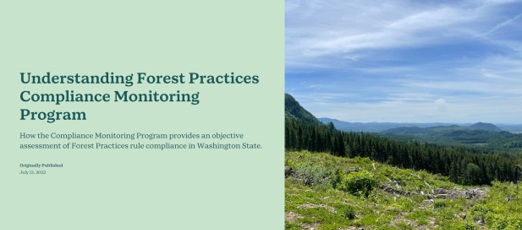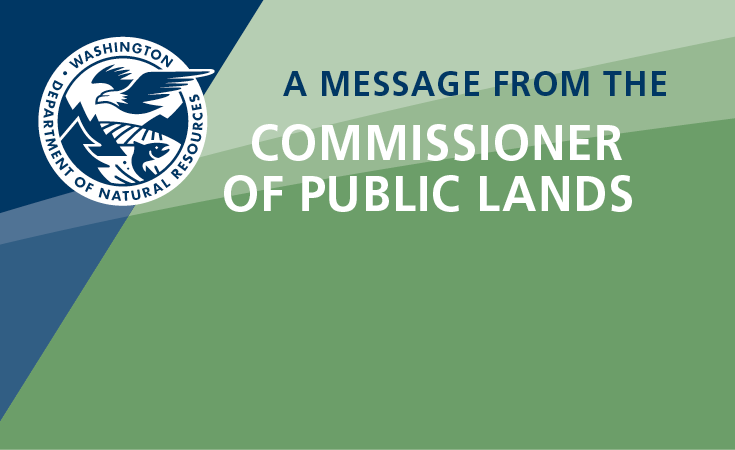Compliance Monitoring
Click on this storymap to learn more about DNR's Compliance Monitoring Program.
Understanding Statewide Forest Practices Rule Implementation Through Post-Harvest Data Collection and Monitoring
The objective of the Washington State Department of Natural Resources’ Compliance Monitoring Program (CMP) is to monitor whether timber harvest and road construction across Washington state are being conducted in compliance with the Forest Practices Rules, and to explore areas that may require improvement via education, training, or updates to rules and guidance. The CMP publishes a statistical study of post-harvest evaluations every two years and reports results directly to the public and the Forest Practices Board.
If you are a member of the public looking to contact DNR about concerns related to a specific forest practices activity, please reach out to your local DNR region office.
About The Compliance Monitoring Program
The Compliance Monitoring Program (CMP) was first described in the 1999 Forest and Fish Report, and the program began collecting data following a pilot study in 2006. Our work draws heavily on compliance monitoring studies completed by the Timber Fish and Wildlife Field Implementation Committee during 1991 and 1995, which provide insight into the efficacy of our Forest Practices Rules (see publication TFW-000-98-001).
CMP explores compliance rates and long-term trends of compliance for harvest activities statewide. CMP collaborates with landowners, Tribal Nations and representatives, Department of Ecology, Department of Fish and Wildlife, and DNR Region Forest Practices staff to perform interdisciplinary field visits to collect data. The program works closely with a contracted statistician to analyze all data and examine how recent findings fit into long-term trends using statistical modeling approaches.
Through this monitoring, CMP provides a deeper understanding of how Forest Practices Rules are being implemented on the ground and devises ways to improve rule compliance through education, training, and proposed updates to rules and board manuals. The CMP studies revolve mainly around understanding harvest behaviors near fish-bearing streams, wetlands, and non-fish perennial and seasonal streams. CMP also examines road building, culvert installations, and abandonment in relation to the potential for sediment delivery into typed waters.
The CMP maintains close relationships with Timber, Fish, and Wildlife (TFW) stakeholders, as well as with landowners, regulators, consultants, and other state agencies to guide and advise the program. The CMP is not a regulatory enforcement process, and all data are uploaded for analysis without identifying markers of landowners. CMP is not an enforcement program, although we do work closely with regulatory staff in the Forest Practices Program who may pursue enforcement as part of their region requirements.
Elements
-
Collect field data at randomly selected FPA sites across all six DNR regions of the state around riparian areas, wetlands, and forest roads.
-
Work closely with a contracted statistician to analyze data for annual, biennial, and long-term compliance trends.
-
Provide reports to the Forest Practices Board, external stakeholders, and the public on biennial findings.
-
Identify areas of the Forest Practices Rules that require further education and training for landowners, regulators, consultants, and operators.
-
Offer suggestions for revisions or clarifications to Forest Practices Rules and Forest Practices Board Manual updates in order to help landowners better understand how to comply with the rules to improve compliance rates over time.



